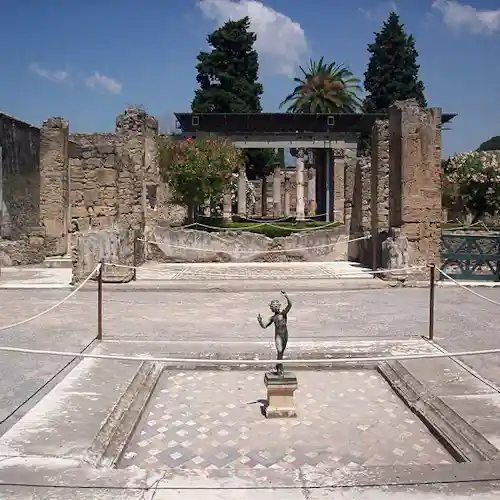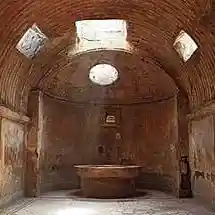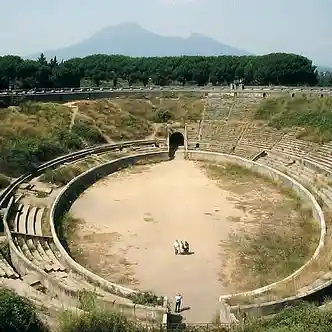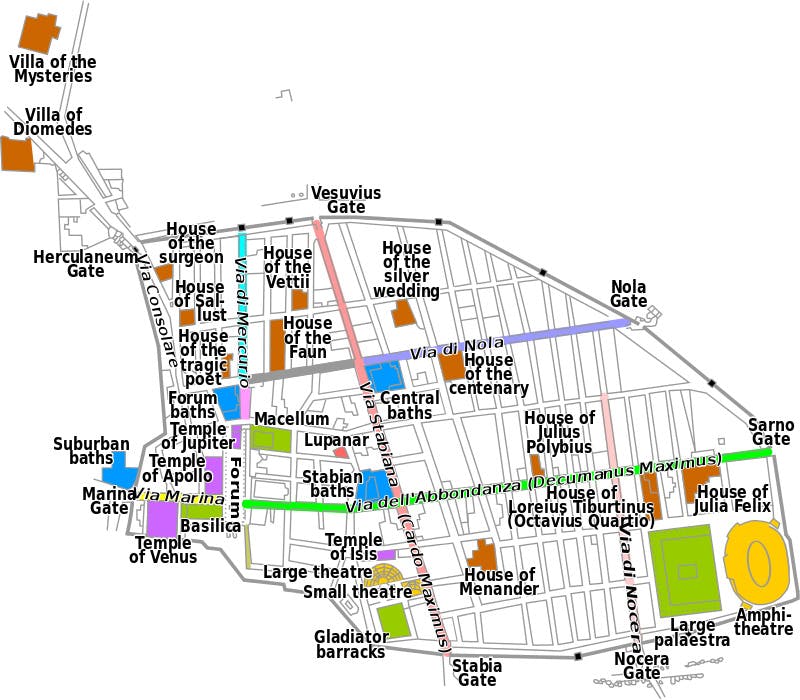Over the course of your life, you have come across many heroes. However, the most remembered heroes are usually tragic. Think Hamlet, Severus Snape or Sweeney Todd. Pompeii is that that tragic hero on the face of our planet. Unceremoniously erased from existence in 79 CE, this city has now reemerged and is open to your imagination and scrutiny. If you find yourself with a spare day in either Naples or Rome, visiting the Pompeii ruins must make it to your agenda.
Before you set off on your visit, here are a few things you must know - the history, highlights of the ruins, how to get from Rome & Naples to Pompeii, a curation of the best Pompeii Tickets and other handy tips to make your visit memorable.
Essential Information


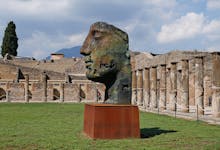
Know before you go
🍁 Best time to visit - November to March
⏰ Suggested duration - 2 days
🎟️ Starting Pompeii ticket price - €13
🔎 Dissolved in - 79 AD
🚄 Closest train station - Pompei Scavi - Villa Dei Misteri
Opening Hours
Tuesday to Sunday - 9 am - 7 pm
Closed on Monday
Must-see
House of Vettii
Temple of Apollo
The House of the Tragic Poet
House of the Faun
Forum of Pompeii
Address
Piazza Immacolata,
80045 Pompei NA, Italy
Get there
Why should you visit Pompeii?

Pompeii’s site has a history of 2 millennia and a window into its once-thriving culture. On a visit to the Bay of Naples, you will uncover the preserved ruins of what’s left of the streets, homes, and people after the eruption of Mount Vesuvius in 79AD. Even everyday objects like urns and pets can be seen at the ruins. When the workmen of the King of Naples found the remains of Herculaneum in 1738, they decided to look at the farther lands where Pompeii lay buried. It was discovered by chance and no one had any idea what they were looking for. On your visit, you can also climb Mount Vesuvius, the vengeful volcano that took prey to thousands of Pompeii’s people. The 30-minute climb is safe and offers panoramic views of the remains of the city.
Pompeii is the closest we will ever see of the roots of the Roman culture since most of the ruins are well preserved. A third of the city is still unexcavated making it a modern-day expedition even for commoners.
A Walk Down Pompeii History
The vicinity of Mount Vesuvius struck as a nice place for retreats to the Greeks around 8th Century BCE. The picturesque and sunny locale soon became a sanctuary for distinguished citizens seeking a recess. Luxury villas were the first to come. The slaves were brought, which in turn saw more and more residential areas, taverns, small factories, brothels, and bathhouses.
An earthquake, which in hindsight was a warning, forced a significant section of the populace out of the city in 63 CE. Pompeii, however, continued with its polished lifestyle. On a fateful day in 79 CE, Mount Vesuvius erupted after a long time. As it spewed lava, the volcanic ash it had sent up in the air began clobbering down on Pompeii. A vast majority of the population fled the catastrophe. However, around 2000 people went down with the city, choking on the ash-laden air and the superheated poison gas. Pompeii and a few nearby towns were lost.
In 1748, a group of explorers stumbled upon the ruins of Pompeii. It was discovered that the volcanic ash had preserved the entire town. Skeletons were found where the people had fallen. Objects of daily use, as well as food items, were unearthed. Almost three centuries later, a large section of the city has been excavated and is now a thriving tourist destination.
Pompeii Ruins - Highlights
Since it was first discovered, interest among the general public regarding Pompeii ruins has only increased. Untiring efforts have led to the excavation of a significant part of erstwhile Pompeii. Here are the most striking spots within Pompeii ruins that should make it into your itinerary.
House of Vettii
This villa represents the typical Roman architecture of its time. After the earthquake, the villa was renovated and installed with water spouting statues. The most notable feature of the villa is the planning that was put into it to facilitate entertainment and luxury of the wealthy merchants who used to stay here. House of Vettii can be found in the western sector of Pompeii ruins.
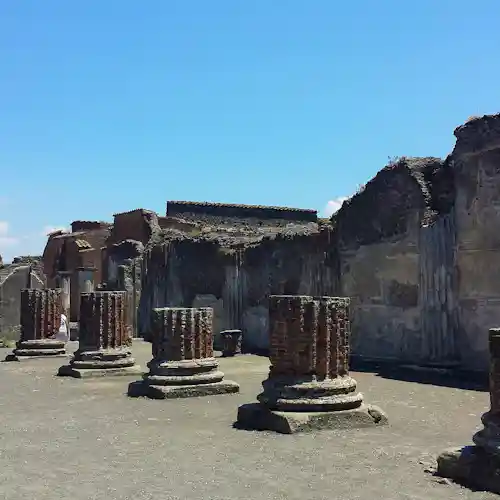
Villa dei Misteri
This is yet another architectural and artistic marvel at the heart of Pompeii ruins. Complete with its own garden and a large terrace, Villa dei Misteri features splendid artworks in the interior quarters. The name alludes to the secret initiation ritual that is painted on the walls. Astonishing details are still visible of a woman being initiated to the cult of Dionysus in the painting.
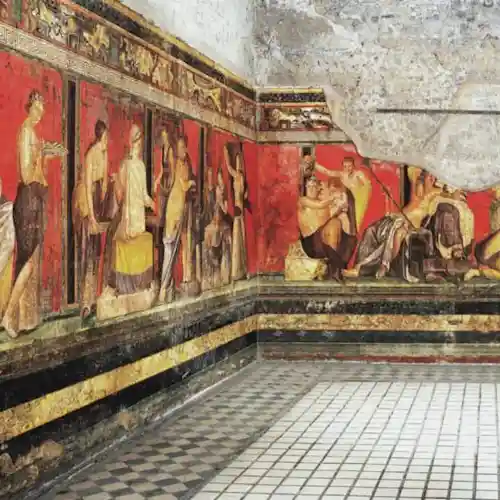
Temple of Apollo
Thought to be the oldest structure within Pompeii ruins, Temple of Apollo is the surviving testimony to the city’s long history. The temple features Etruscan architecture that was later modified by the Greeks, and then further amended by the Romans. The statue of Apollo and the bust of Diana seen in the temple today are the copies of the original artefacts excavated at the site.
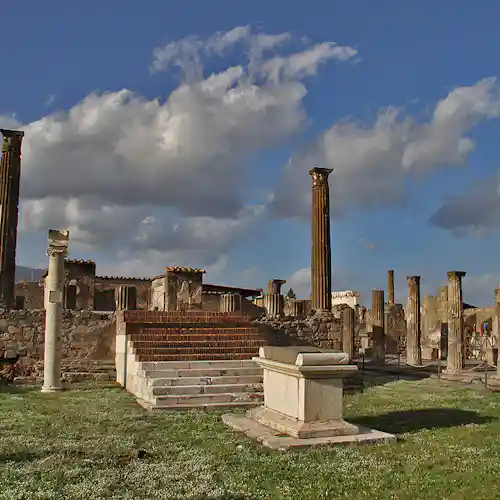
The House of the Tragic Poet
This relatively small house at the far-west section of the Pompeii ruins is adorned with gorgeous decoration and elegant frescoes. The floor features a curious mosaic depicting people gathering backstage. This led researchers to believe that the house belonged to a notable poet. At the entrance, one can still see a sign in Latin warning visitors about a dog.
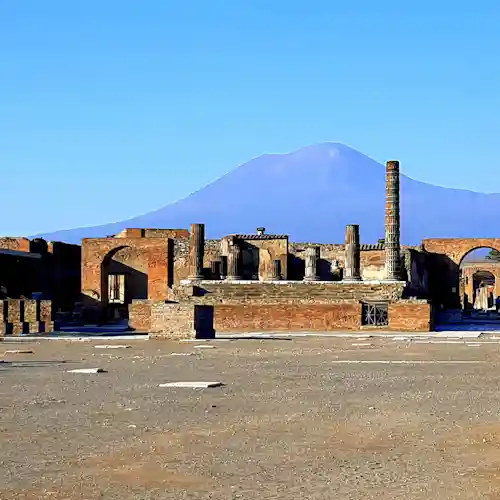
Lupanare
Among the several brothels within Pompeii ruins, Lupanar is by far the largest. The rooms have stone platforms that were topped with mattresses and used for beds. Watch out for the graffiti on the walls of Lupanar. It is said that they were drawn by both the prostitutes and their clients. Some graffiti form conversations and offer you a unique viewpoint of Pompeii ruins.
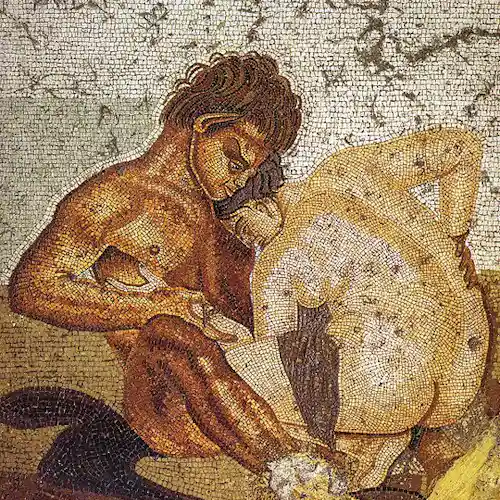
House of the Faun
This private villa is so large that it takes up an entire block of Pompeii ruins. Named after the statue of a faun that was found here, the villa accounts for a significant number of contemporary artworks. The most distinguished among them is the Alexander Mosaic, which illustrates Alexander the Great facing off against Darius III of Persia. Currently, the complex geometric floor pattern garners the most attention from visitors.
Forum of Pompeii
The forum was the center of all cultural and political activities of Pompeii. The large rectangular open space was also thought to be the home of the marketplace and the bathhouses. The cross-shaped design of the courthouse was later adopted by churches across Europe. Albeit most of the buildings lie in ruins, the nobility and splendour of the erstwhile Pompeii can still be approximated.

Stabian Baths
Public baths were a differential trait of the Roman empire, and that fact is reinstated in the Pompeii ruins. The entire sector had three thermal baths, one of which was still under construction. The chambers were heated by running hot water through the walls of the rooms. The public baths excavated in Pompeii ruins have unified sections for men and women.
Pompeii Spectacula
Built around 70 BCE, this amphitheatre is so old that the word “amphitheatre” wasn’t even in use during its time. This is also the first Roman amphitheatre built of stone, outdating the Colosseum by a century. With a capacity equal to the entire population of Pompeii, this used to be the center of all sporting events in the city. You can see an almost entirely preserved Spectacula in Pompeii ruins now.
The Temple of Isis
Located behind Teatro Grande, the Temple of Isis is a Roman temple dedicated to the Egyptian goddess Isis. This compact temple was one of the first things that surfaced when the excavations started. Principal devotees of the Temple of Isis are believed to be women, freedmen, and slaves. The cult of Isis is said to have spread in the Hellenistic age due to the religious contacts of the Greeks with the East and Egypt.

Pompeii Tickets
If you're planning a visit, make sure you grab your tickets in advance as the queues outside can take upto an hour during peak season. Skip the line tickets with guided tours are highly recommended and so are the combo tickets that take you around Naples, Rome, or Amalfi. Browse through our catalogue of the best Pompeii Tickets and headout with us on an archaeological journey.
Choosing a Pompeii Tour
In the 21st Century, we are spoilt for choices in every aspect of our lives. Pompeii tours are no different. Below are multiple options available for you when it comes to choosing a guide for a Pompeii tour.
- Tour Guide
Accompanying a pre-booked tour guide gives your Pompeii tour a uniquely human touch. You may get your questions answered as you are led through Pompeii ruins. There are no signboards and not too many descriptors in Pompeii, hence making sense of what you're seeing will be hard. Having a guide along with you is enriching as the local guides are so knowledgeable that they have lores and facts that surface nowhere on the internet. - Audio Guide
Near the Porta Marina entrance you will find hawkers selling a small white remote and a map of Pompeii called the Little Red Book. These audio guide devices work cheaper than the guided tour too and allow you to explore the place at your own pace. Picking an audio guide will also enable you to drown out the noise in the vicinity and concentrate on the pre-recorded commentary. - App Tour
With the flooding of smartphones, almost everything is now at your fingertips. An app tour will bring an interactive feel to the tour, and you never have to worry about falling behind the group. This is the most cost effective way to visit Pompeii. All you have to do is download the free Pompeii App on your phone and use the map they give at the entrance to tour the ruins. If you're technologically adept and can read maps well, this is proven a great way. - On-spot Tour Guide
A handy option if you are planning a whirlwind tour. Booking a tour guide on the spot gives you an edge with quality, as you are more likely to find a local expert to lead you on. However, be warned, they may charge a premium and getting a guide who speaks your native language maybe hard. Moreover, if you're not fluent in Italian, bargaining with them and understanding what their saying during the tour maybe hard.

Best Pompeii Tours For The Ultimate Experience Of the Lost City
Day Trips To Pompeii From Rome
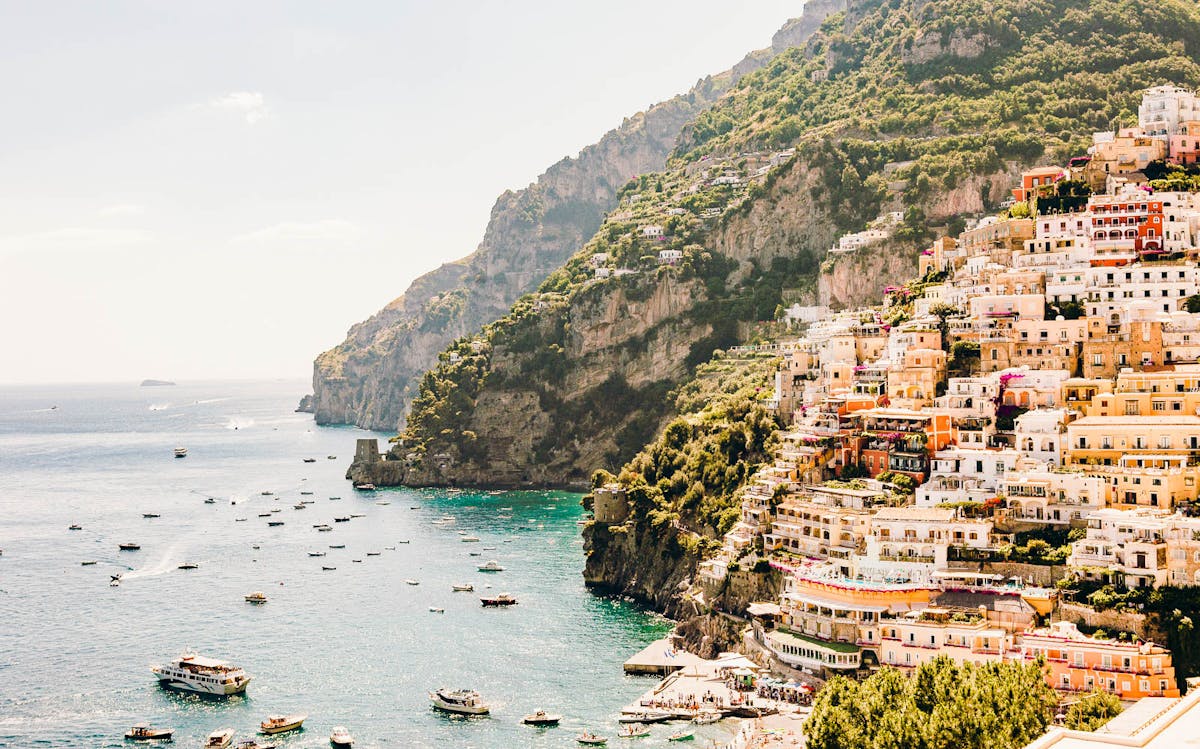
Take a day trip to Pompeii from Rome, the ideal Mediterranean getaway with picturesque views! Combine the alluring culture of Rome with the ancient history of Pompeii with the coastal views of Amalfi on your journey. The other souther Italy sights you can cover are Naples (birthplace of pizza), Ercolano, Sorrento, and Positano. You can include activities from a gastronomic food tour to adventure and cultural events of these sights. Learn more about the best recommended day trips to Pompeii from Rome.
All About The Pompeii Entrances
There are 3 entrances in Pompeii one must know of. Make sure to map the closest entrance to you to save time and energy.
- Porta Marina (Marine Gate)
Also known as the main entrance given the facilities available. You can hire audio guides, access the information kiosk, collect souvenirs, as well as gain express entrance from this gate. - Piazza Anfiteatro
This is a 15 minutes walk to the east in the town of Pompeii and possibly the best sightseeing entrance since you are led directly to the amphitheatre, the forum, and other important spots of Pompeii ruins. You can hire audio guides from this entrance as well. You also have a free luggage storage service here, where you can leave your bags, umbrellas etc. If you're taking the public bus to Mount Vesuvius, know that it terminates here. - Piazza Esedra
Not very far away from the Porta Marina entrance, this is possibly the least serviceable entrance to Pompeii ruins. Consequently, the entrance is less crowded and thus suitable for a no-fuss tour.
Pompeii Map
Below is a map of Pompeii ruins that will help you navigate around this colossal site. Download the map and keep it handy, or make sure to pick up a free copy of the Pompeii Map from the entrance.
Getting to Pompeii
Rome to Pompeii
- By Bus: Take a Flixbus from Rome to Pompeii
- By Train: Take a train to Naples Central station and then the Circumvesuviana to Pompei Scavi.
- By Car: E45 via Strada Statale.
Taking the train from Rome would save time as well as money for a tour to Pompeii ruins.
Naples to Pompeii
- By Bus: SITA from Naples to Pompeii (Piazza Esedra entrance)
- By Train: Circumvesuviana network train. Use the Pompei Scavi stop.
- By Car: Motorway A3, exit at Pompeii Est or Pompeii Ovest.
Taking the train would be the most convenient and economical way to reach Pompeii ruins from Naples.
Insider Tips for Visiting Pompeii
- If you are planning a tour of Naples as well, get an ArteCard. Among the many complimentary offers, your entry to Pompeii ruins is free depending on which variation of the card you buy.
- Carry low heel slippers since the only way to actually explore Pompeii ruins is to walk on worn out ancient roads. Also, try not to wrap yourself tightly in clothes.
- Pompeii is mostly sunny. Keep a water bottle handy to replenish it at the water fountains.
- Give yourself at least 4 to 5 hours to explore Pompeii ruins in their entirety.
- By order, you will be barred from entering 2 hours before closing time.
- There is a cafeteria in Pompeii, but it would still be a smart choice to bring your own food. Eat it before you enter Pompeii ruins since food won’t be allowed inside the premises.
- If you are a shutterbug, enter via Piazza Anfiteatro and walk past the amphitheatre keeping it on your right until you hit a wooden gate. You will see a wooden fence from here to your right, that is shorter than the rest of the fence. You can get a brilliant shot of Mount Vesuvius from that spot. That possibly was also the spot that gave Pompeii’s residents a view of their doom.
- Store your luggage at either Piazza Anfiteatro or Porta Marina for a nominal fee.
- Avoid taking a guide outside Pompeii ruins premises even if they are cheaper. These tour guides generally take tour groups of more than 30 people, eventually drowning all the crucial information out.
- Purchase tickets online and save yourself time and energy. The queues outside can take upto an hour and a half during peak season and it kills your motivation to walk. Tickets online are priced at the same rates as the counter, so buy the Skip the Line access tickets and waltz in.
- Carry a medium sized bag because the security levels vary and sometimes they do not allow rucksacks in for security purpose as well as to curb damage on the ruins.
- The first Sunday of every month allows free entry. Be warned, this also happens to be the busiest day of the month in Pompeii!
- Make the most of your day by combining your Pompeii visit with a quick tour of the sister town - Herculaneum. Read more about Herculaneum, all that there's to do and how to get from Pompeii to Herculaneum on our detailed blog.
- If you wish to visit Mount Vesuvius from Pompeii, take a bus from the Pompei Scavi Circumvesuviana station to Mount Vesuvius. The Vesuvio Express is the most popular one and fills up quickly. This bus will take you to the foot of the summit from where you can hike up. The hike is for around 1.6km from the bus drop, but it is a steep hike on dusty gravel. Make sure you’re wearing shoes and carry ample bottles of water.
FAQs
What are the most popular sites at the Pompeii Ruins?
How many entrances are there to Pompeii?
Should I choose a tour guide for my visit to Pompeii?
What are the timings to visit the Pompeii Ruins?
Can I book Skip The Line tickets to Pompeii?
Are there single-day tours from Naples to Pompeii?
Are there day tours from Rome to Pompeii?
Can I book guided tours of Pompeii online?
Ready To Explore Naples?
Check out our comprehensive list of things to do in Naples packed with itineraries, tours, culture trips, best hotels, restaurants and a lot more.


